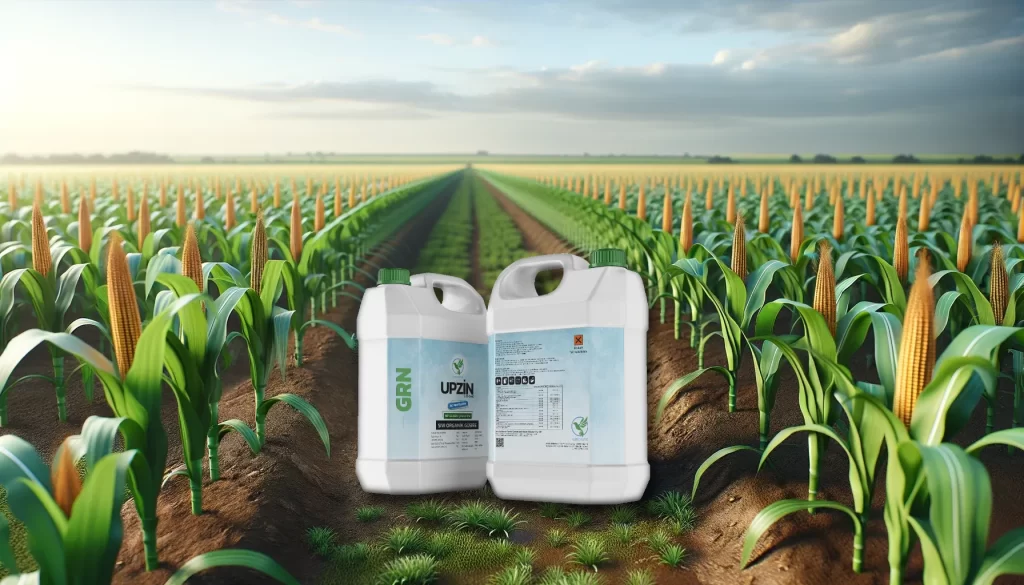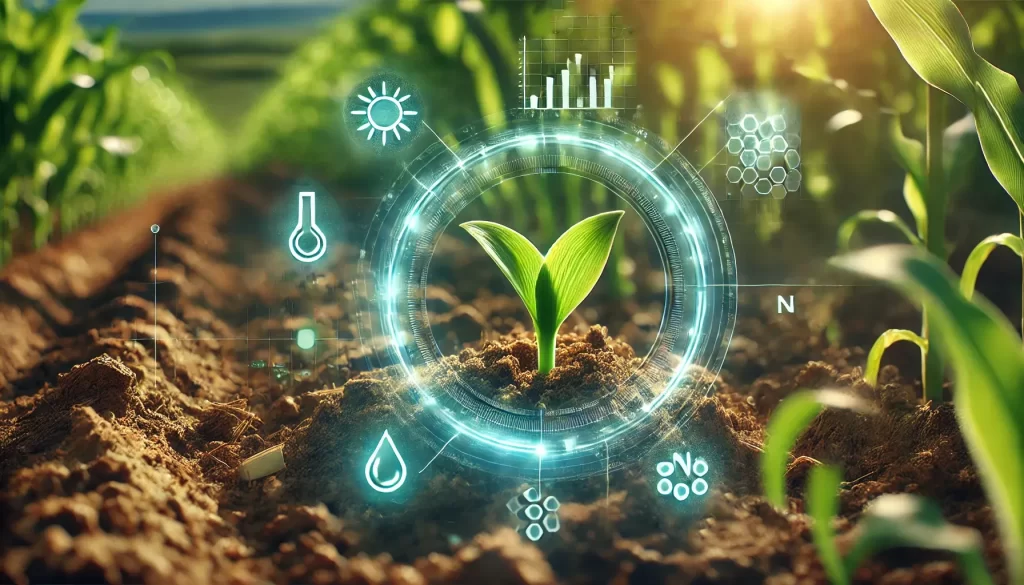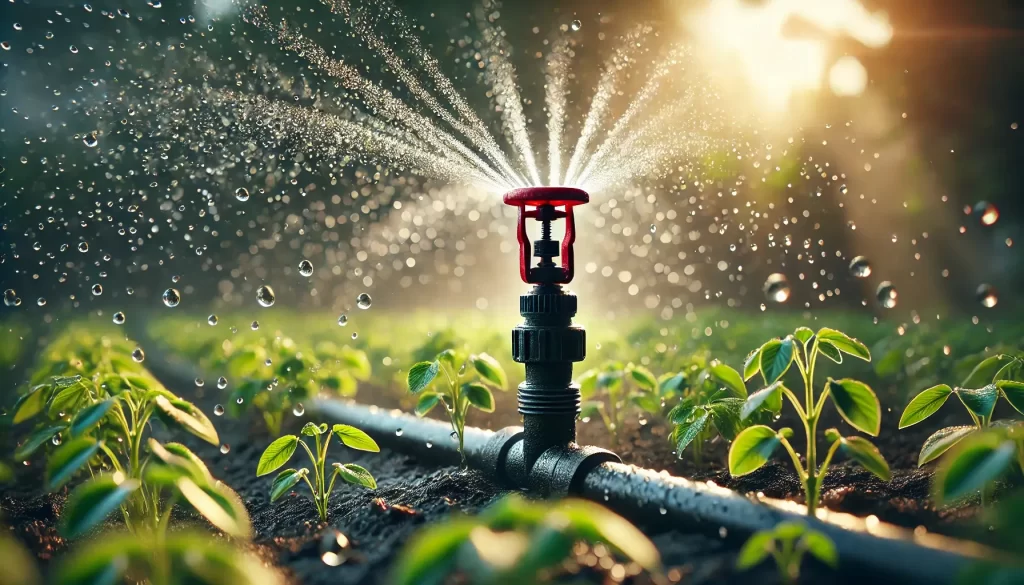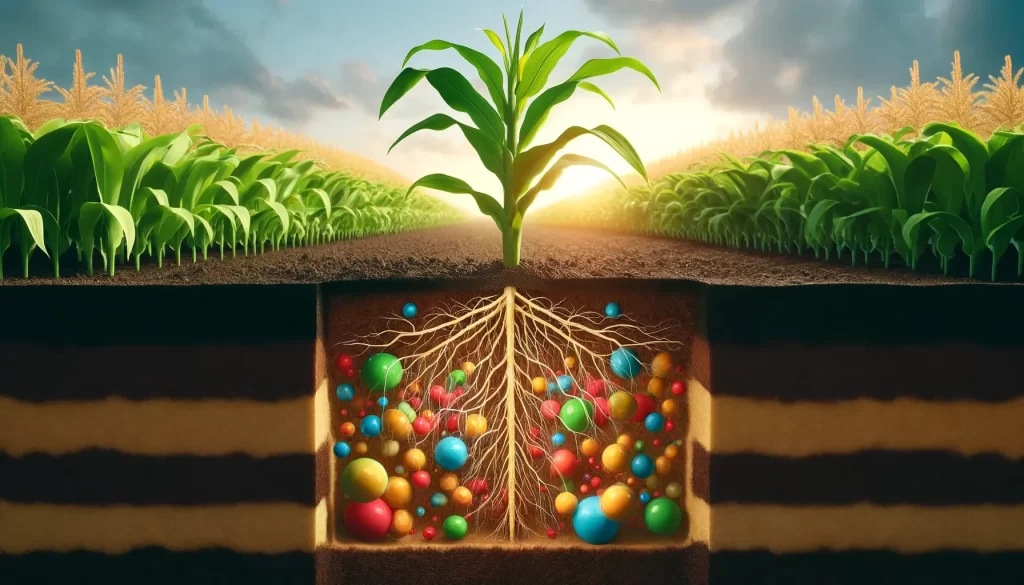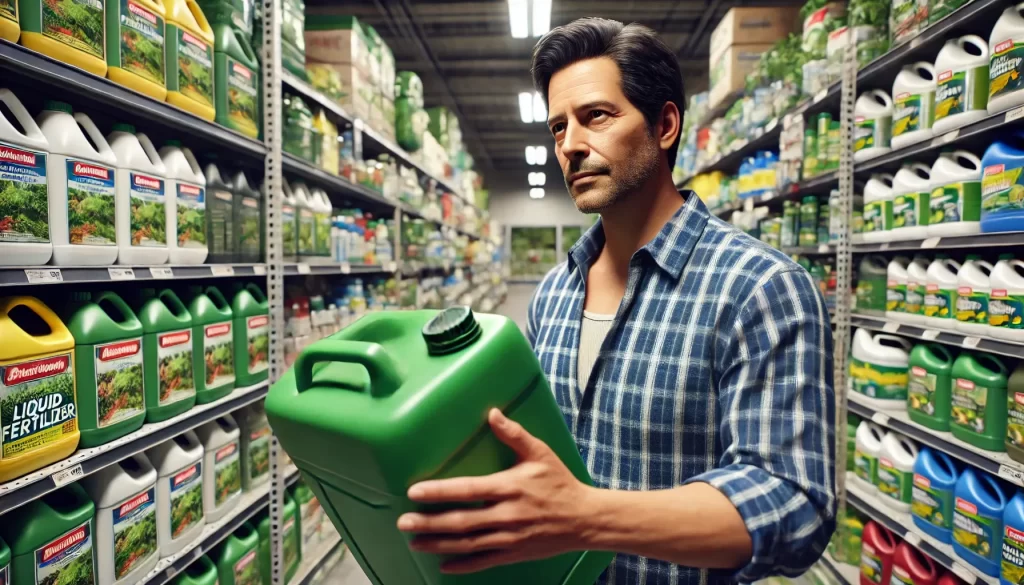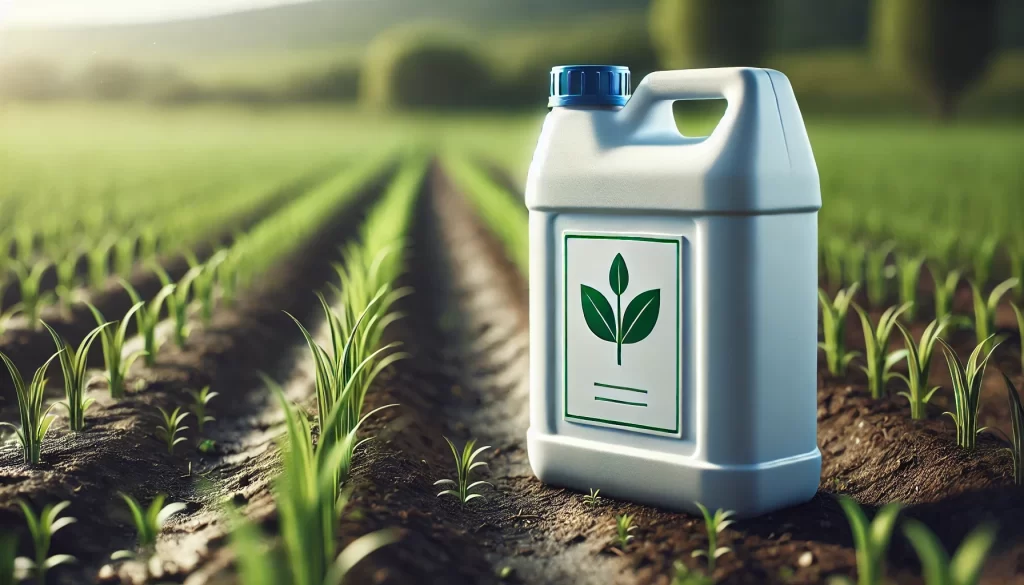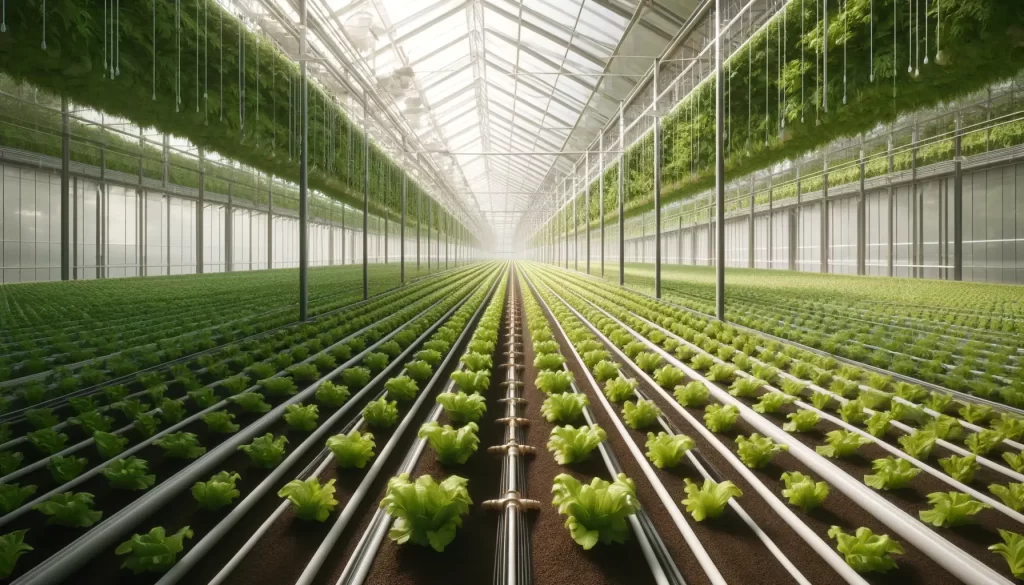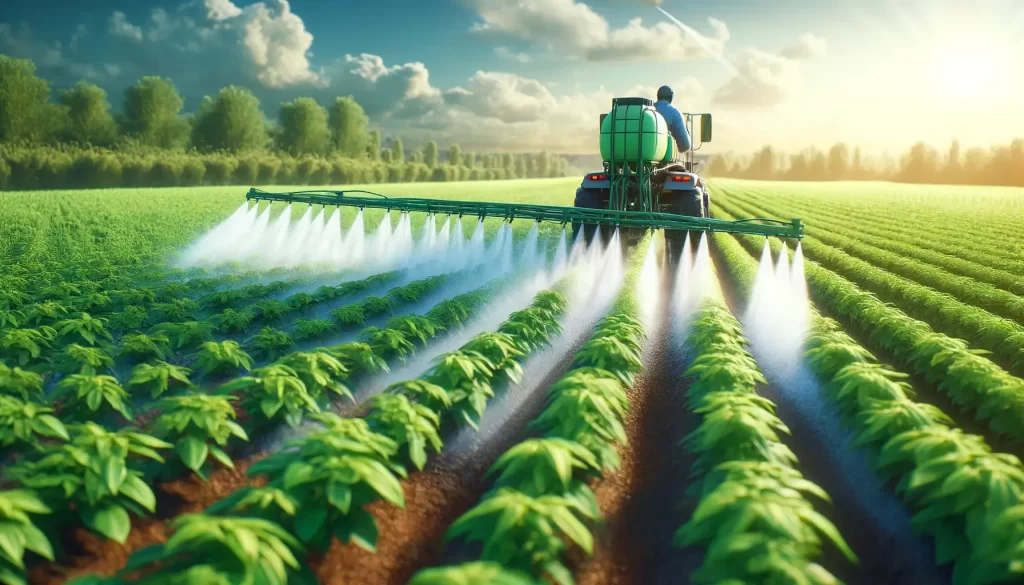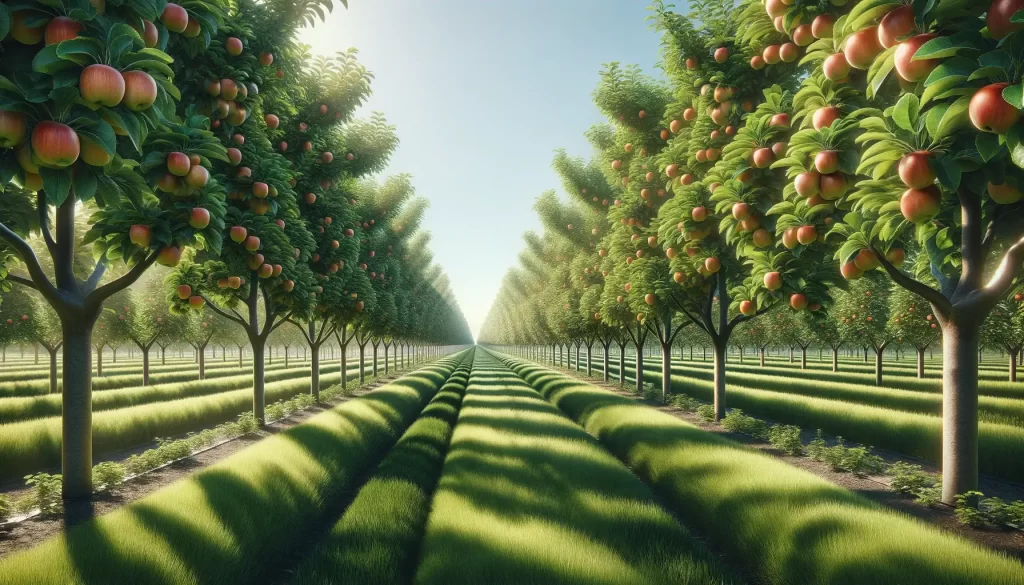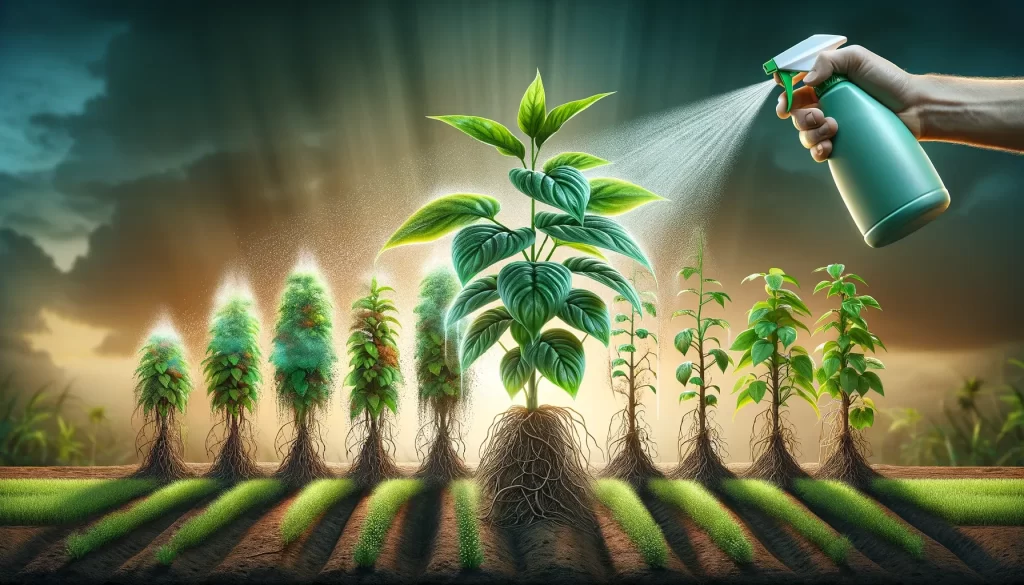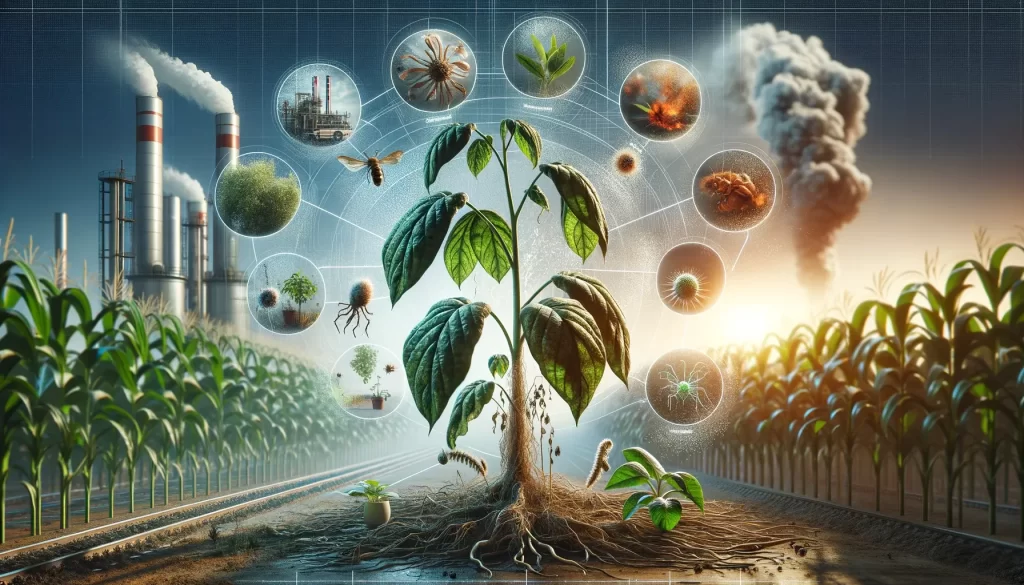What is Multi-Phytonutrient Liquid Fertilizer?
In modern agriculture, multi-nutrient liquid fertilizers are of critical importance to best meet the nutritional needs of plants and achieve high yields. By providing multiple nutritional elements in a single formulation, these fertilizers facilitate the fertilization process in agricultural production and horticulture and significantly increase productivity.
Liquid fertilizers have many advantages over solid fertilizers. Features such as easy application, fast effect, high uptake of nutrients and even nutrient distribution make liquid fertilizers an ideal choice for modern agriculture.
Multiple plant nutrients liquid fertilizers can be specifically formulated for different plant species and growing conditions. These fertilizers contain macro and micro nutrients in a balanced manner and provide all the nutrients necessary for the healthy growth and development of plants.
In this article, multiple plant nutrient liquid fertilizers We will examine its features, usage areas, advantages and application techniques. We will also discuss what kind of opportunity the liquid plant nutrition products we offer as Greenlive are for our dealers.
Features of Multi-Phytonutrient Liquid Fertilizers
- Nutrient elements and ratios: Multi-phytonutrient liquid fertilizerscontain macronutrients such as nitrogen (N), phosphorus (P), potassium (K), magnesium (Mg), calcium (Ca) and sulfur (S), iron (Fe), zinc (Zn), It contains micronutrient elements such as copper (Cu) and boron (B). The proportions of nutritional elements vary depending on the plant type and growing conditions.
- Different formulations and areas of use: Multi-nutrient liquid fertilizers are specially formulated for different plant species and growing systems. Special formulations are available for field crops, vegetables, fruits, ornamental plants and plants grown in hydroponic systems.
- Productionmethods and technologies: Liquid fertilizers are produced by chemically processing raw materials. During the production phase, it is important to formulate the nutrients in a way that they can be easily absorbed by plants.
- Quality control and standards: Liquid fertilizers It is important that it passes quality control tests during the production phase and as the final product. Nutrient content and other quality parameters of fertilizers must comply with national and international standards.
Usage Areas of Multi-Plant Nutrient Liquid Fertilizers
Multiple plant nutrient liquid fertilizers have a wide range of uses. Below are some examples of the uses of liquid fertilizers:
- Agricultural production: In field crop cultivation, liquid fertilizers are used to meet all macro and micro nutrients that plants need. In this way, productivity increases, product quality increases and the resistance of plants to diseases and pests is ensured.
- Gardening: In the cultivation of potted plants, cut flowers and ornamental plants, liquid fertilizers are used to make the plants grow healthy and become more decoratively attractive. The easy application of liquid fertilizers is a great advantage, especially for those engaged in hobby gardening.
- Greenhouse cultivation: In greenhouse cultivation carried out under controlled conditions in closed environments, the nutritional needs of plants do not depend on the soil structure. Therefore, liquid fertilizers help achieve high yields by ensuring that nutrients are easily absorbed by plants.
- Hydroponic and aeroponic systems: In hydroponic and aeroponic systems, which are soilless farming methods, the nutrients of plants are met entirely from fertilizers dissolved in water. Therefore, liquid fertilizers are the most suitable fertilization method for hydroponic and aeroponic systems.
Usage areas of liquid fertilizers are not limited to these. Liquid fertilizers are often preferred in the maintenance of green areas such as golf courses, parks and gardens.
Advantages of Multi-Phytonutrient Liquid Fertilizers
Multi-nutrient liquid fertilizers have many advantages over traditional solid fertilizers. Thanks to these advantages, the use of modern liquid fertilizers in agriculture is becoming increasingly widespread. Below, let’s list the main advantages of liquid fertilizers:
- Easy application and fast effect: Liquid fertilizers can be easily mixed with water and applied via irrigation systems or directly to the soil. In this way, ease of application and savings in labor costs are achieved. Additionally, liquid fertilizers dissolve quickly in the soil, allowing nutrients to be taken up by plants in a shorter time.
- High uptake of nutrients: Liquid fertilizers are formulated so that plants can more easily absorb nutrients from their leaves or root system. In this way, higher uptake of nutrients by plants is achieved compared to traditional solid fertilizers. More efficient nutrient uptake leads to faster plant growth and higher yields.
- Equal nutrient distribution and homogeneity in fertilization: Liquid fertilizers are distributed homogeneously by mixing with water. In this way, the entire applied area receives the nutrients needed by the plants in equal amounts. Equal nutrient distribution contributes to a healthier and more balanced development of plants.
- Environmentally friendly and sustainability: Liquid fertilizers have a shorter retention time in the soil. In this way, the risk of accumulation of nutrients in the soil and environmental pollution is minimized, as in traditional solid fertilizers. In addition, thanks to the controlled application of liquid fertilizers, water The risk of contamination of resources is also reduced. Therefore, liquid fertilizers are environmentally friendly and suitable for sustainable agricultural practices.
As Greenlive, we produce environmentally friendly liquid fertilizers that contain all the macro and micro nutrients that plants need. Our products are specially formulated for different plant species and growing conditions.
Application Techniques and Dosage
Multiple phytonutrients Correct application techniques and dose calculation are critical for the effective use of liquid fertilizers. Below, let’s talk about the application methods and dose calculation of liquid fertilizers:
Application Methods
- Application with irrigation systems: Liquid fertilizers can be integrated into irrigation systems and applied to plants easily and homogeneously. This method is especially preferred in agricultural production and greenhouse cultivation in large areas.
- Foliar application: Liquid fertilizers can be applied by spraying them on the leaves of plants as a fine mist. This method is preferred when plants need nutrients quickly or when soil conditions prevent nutrient uptake. When applying foliar, weather conditions should be taken into consideration and application should not be made on sunny or extremely hot days.
- Application to the soil: Liquid fertilizers can also be applied by pouring them directly into the soil or by mixing them with water and moistening the soil. This method is generally preferred for fruit trees, ornamental plants and plants in the seedling stage.
Dosage Calculation
Dosage calculation of multi-nutrient liquid fertilizers should be made based on several factors. These factors are:
- Plant type: The nutritional needs of different plant species vary. Therefore, plant type should be taken into account when choosing fertilizer and calculating dosage.
- Soil analysis: Soil analysis results reveal the amount of nutrients present in the soil. When calculating the dose, only the missing nutrients in the soil are taken into account. Liquid fertilizer should be supplemented for nutrients that are available in liquid fertilizers.
- Plant development period: Nutrient needs of plants vary in different development periods. When calculating the dose, the development period of the plant should also be taken into account.
- Desired efficiency: If high efficiency is aimed, the dose calculation should be adjusted accordingly. However, excessive application of liquid fertilizer may cause damage to plants and environmental pollution. , dose calculation must be followed in accordance with the recommendations of the technical service.
As Greenlive, we provide technical support to our dealers and farmers We provide guidance on choosing the right fertilizer and calculating the dose. In this way, we ensure that liquid fertilizers are used in the most effective way and optimum efficiency is achieved.
Points to Consider
There are some important points to consider when using multi-plant nutrient liquid fertilizers. Paying attention to these points is of great importance for both the health of the plants and environmental protection.
- Content of the fertilizer and suitability for plant needs: The selected liquid fertilizer must contain the macro and micro nutrients needed by the plant in the correct proportions. Wrong choice of fertilizer or incomplete nutrient supplementation can negatively affect plant growth. As Greenlive, we offer liquid fertilizers specially formulated according to the needs of different plant species in our wide product range. Our technical service will guide you in choosing the right fertilizer.
- Application time and weather conditions:The application time of liquid fertilizers may vary depending on the plant type and climatic conditions. In general, early morning or evening coolness is preferred. Applications made in hot and sunny weather may cause liquid fertilizers to evaporate and reduce their effectiveness. On days when rain is expected, application should be postponed.
- Safety and storage conditions: Liquid fertilizers are usually sold in concentrated form and are diluted with water before application. When diluting, attention should be paid to the proportions specified on the label. Contact with eyes and skin should be avoided and appropriate protective equipment should be used. Liquid fertilizers should be stored in securely locked warehouses, away from sunlight and heat sources.
- Miscibility and interaction with other chemicals: It may not be appropriate to mix and use liquid fertilizers with different plant protection products. Regarding miscibility, product labels should be checked or Greenlive technical service should be consulted. Wrong mixtures can lead to plant poisoning and yield losses.
Multi-nutrient liquid fertilizers are a revolutionary development in plant nutrition in modern agriculture. Thanks to their advantages such as easy application, fast effect, high nutrient uptake and even distribution, liquid fertilizers offer a more efficient and environmentally friendly alternative to traditional solid fertilizers.
As Greenlive, we develop quality and environmentally friendly liquid plant nutrition products with innovative production technologies. We best meet the needs of farmers and growers with our wide range of products specially formulated for different plant types and growing conditions.
Be our dealer and step into high efficiency and sustainable agriculture with Greenlive liquid fertilizers! Our technical service will always support you on correct product selection, dose calculation and application techniques.
Contact us to get more information and become a Greenlive dealer!
Frequently Asked Questions (FAQ)
1. What advantages do liquid fertilizers have over solid fertilizers?
Liquid fertilizers have many advantages over solid fertilizers. These advantages are:
- Easy application: Liquid fertilizers can be easily mixed with water and applied via irrigation systems or directly to the soil. In this way, ease of application and savings in labor costs are achieved.
- Fast effect: Liquid fertilizers dissolve quickly in the soil, allowing nutrients to be taken up by plants in a shorter time.
- High nutrient uptake: Liquid fertilizers are formulated so that plants can more easily absorb nutrients from their leaves or root system. In this way, higher uptake of nutrients by plants is ensured.
- Equal nutrient distribution: Liquid fertilizers are distributed homogeneously by mixing with water. In this way, the entire applied area receives the nutrients needed by the plants in equal amounts.
- Environmentally friendly: Liquid fertilizers have a shorter retention time in the soil. In this way, the risk of accumulation of nutrients in the soil and environmental pollution is minimized, as in traditional solid fertilizers.
2. What nutrients do multi-nutrient liquid fertilizers contain?
Multi-nutrient liquid fertilizers contain macronutrients such as nitrogen (N), phosphorus (P), potassium (K), magnesium (Mg), calcium (Ca) and sulfur (S), iron (Fe), zinc (Zn), It contains micronutrient elements such as copper (Cu) and boron (B). The proportions of nutrients vary depending on the plant type and growing conditions.
3. In which areas are liquid fertilizers used?
Liquid fertilizers are used in many areas such as agricultural production, horticulture, greenhouse cultivation, and hydroponic and aeroponic systems.
4. What are the application techniques of liquid fertilizers?
Liquid fertilizers can be applied with techniques such as application with irrigation systems, foliar application and soil application.
5. How to calculate the dose of liquid fertilizers?
Dosage calculation of liquid fertilizers should be made depending on factors such as plant type, soil analysis, plant development period and desired yield. When calculating the dose, Greenlive technical service should be consulted.
6. What should be considered when using liquid fertilizer?
Liquid fertilizer Some things to consider when using The important points are:
- Content of fertilizer and suitability for plant needs
- Application time and weather conditions
- Safety and storage conditions
- Miscibility and interaction with other chemicals
7. Why should I choose Greenlive liquid fertilizers?
Greenlive liquid fertilizers should be preferred for the following reasons:
- Quality and raw materials
- Special formulations for different plant species and growing conditions
- Environmentally friendly and sustainability
- Technical service support
8. How can I become a Greenlive dealer?
You can contact us to become a Greenlive dealer.



